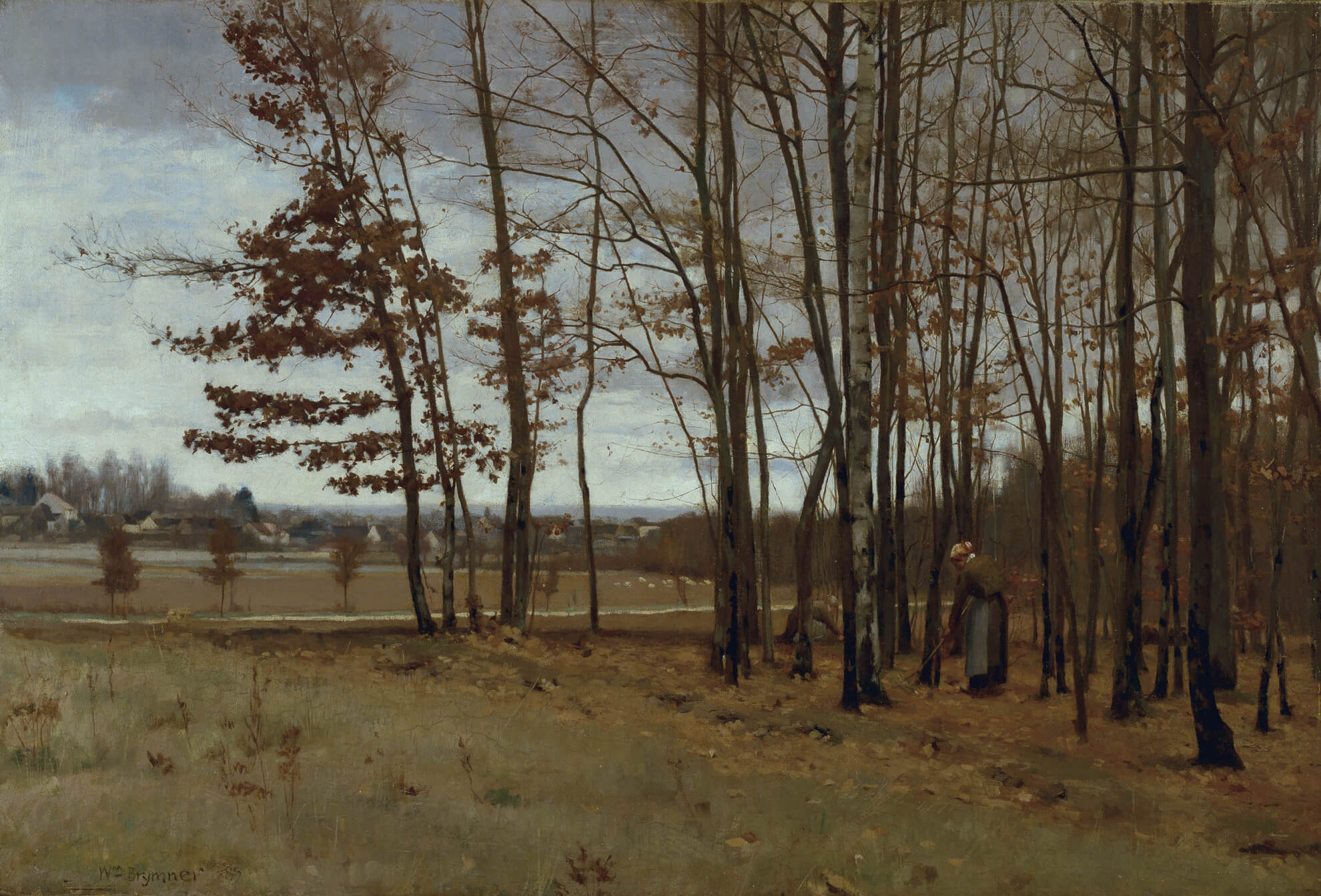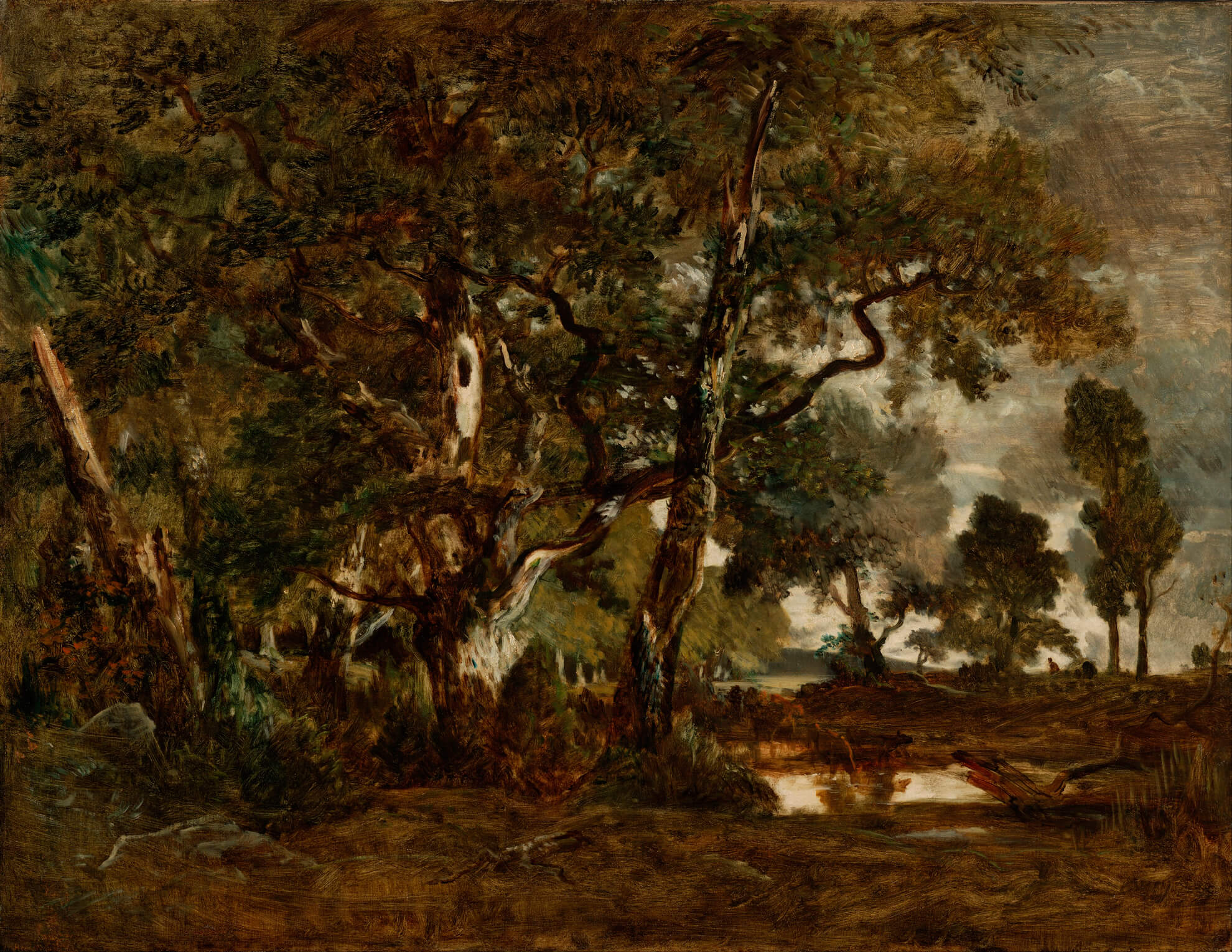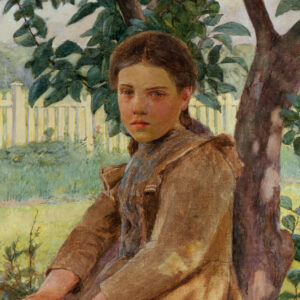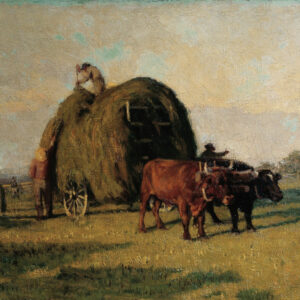Border of the Forest of Fontainebleau 1885

William Brymner, Border of the Forest of Fontainebleau, 1885
Oil on canvas, 54 x 80.6 cm
Agnes Etherington Art Centre, Kingston
Border of the Forest of Fontainebleau is a sombre wintry view of the French countryside in which two figures are gathering leaves. The subject is significant: Fontainebleau is located near Barbizon, and both places were critical for modern French landscape painters such as Jean-François Millet (1814–1875), Théodore Rousseau (1812–1867), and Narcisse Diaz de la Peña (1807–1876), artists who are now the most famous of the so-called Barbizon school. Brymner painted this work to demonstrate his own talent as a landscape painter. He aimed to impress critics and peers with his complex composition, and his plan was to submit it to the Paris Salon exhibition, then considered to be one of the most prestigious exhibition spaces in the world. Just as Brymner had hoped, the painting was accepted for exhibition at the salon in 1885.
In letters to his father, Brymner described the work: “My picture is purely landscape. A screen of trees dead leaves under them a gray sky and village, and some fields seen through them. The subject is so full of detail by way of tree branches that [it’s] very tedious to work out, but I think it will do when finished if I can work out the whole of it as I have done a part. The only thing is that there may not be enough of effect about it. The whole thing is (in nature) extremely delicate in colour.” The work reflects Brymner’s stubborn commitment to painting outdoors. Reporting on his progress, he noted that “for the last week or 10 days I had to do it in the pouring rain under a blue umbrella, got soaked three or four times I finally had to put the two figures who are gathering leaves, in in the studio.” The poor weather is clearly apparent in the finished painting.

Border invites comparison with the work of the Barbizon school, but the connection is complex. Brymner had chosen his subject strategically; he knew that he was painting in a region where Millet, Rousseau, and Diaz had lived. The Barbizon school is now known for a commitment to painting en plein air to observe nature with sensitivity and to treat landscape as a serious subject, and Brymner shared these goals. He was well aware that the region was an artistic centre, observing in 1881 that Barbizon “is on the borders of the forest, and is almost exclusively an artists’ place of refuge. All the villages round about are frequented by the same fraternity. . . . There are a good many good painters here so that I am always learning something by watching them work from nature.”
But while Brymner believed in learning from other artists’ principles and practices, he did not believe in stylistic emulation. In commenting on the Barbizon school, he noted that although he admired Rousseau and Millet, the Barbizon painters “developed into a school” and its followers fell “into the abyss of Blackness and Bitumen.” It is safe to assume that he did not consider himself to be a follower, perhaps because he considered Border an experimental work. The painting remained important to Brymner for many years and was among the works he displayed at the World’s Columbian Exposition in Chicago in 1893.

 About the Author
About the Author
 More Online Art Books
More Online Art Books
 Acknowledgements
Acknowledgements